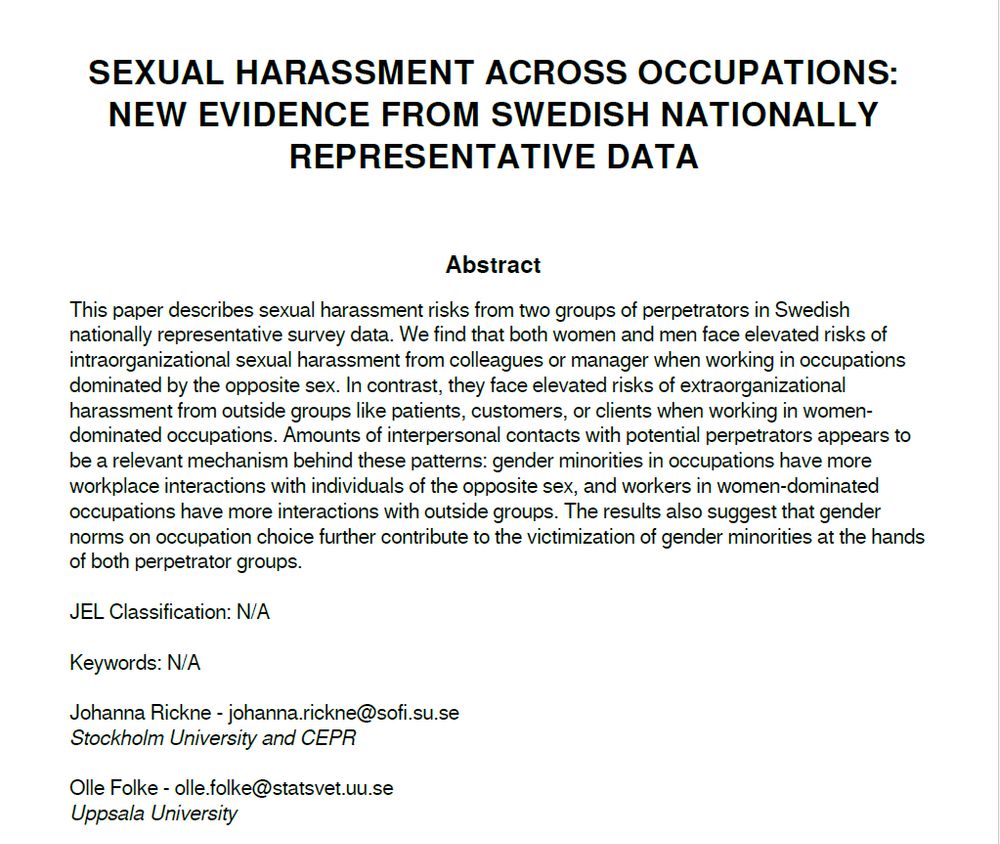
Reposted by: Johanna Rickne, Andreas Ortmann, Andreas Kotsadam


Reposted by: Johanna Rickne, Paola Profeta
“𝐆𝐞𝐧𝐝𝐞𝐫 𝐈𝐧𝐞𝐪𝐮𝐚𝐥𝐢𝐭𝐲: 𝐍𝐚𝐯𝐢𝐠𝐚𝐭𝐢𝐧𝐠 𝐍𝐞𝐰 𝐟𝐫𝐨𝐧𝐭𝐢𝐞𝐫𝐬 𝐀𝐧𝐝 𝐏𝐚𝐫𝐚𝐝𝐢𝐠𝐦 𝐒𝐡𝐢𝐟𝐭𝐬”
Organized by Bocconi Axa Gender Lab,the WISPPRH at the lSE, @margauxsuteau.bsky.social & NYU Abu Dhabi ✨
👩💻Online or in-person participation is more than welcome!
Registration & info👉 www.lse.ac.uk/social-polic... 🔗
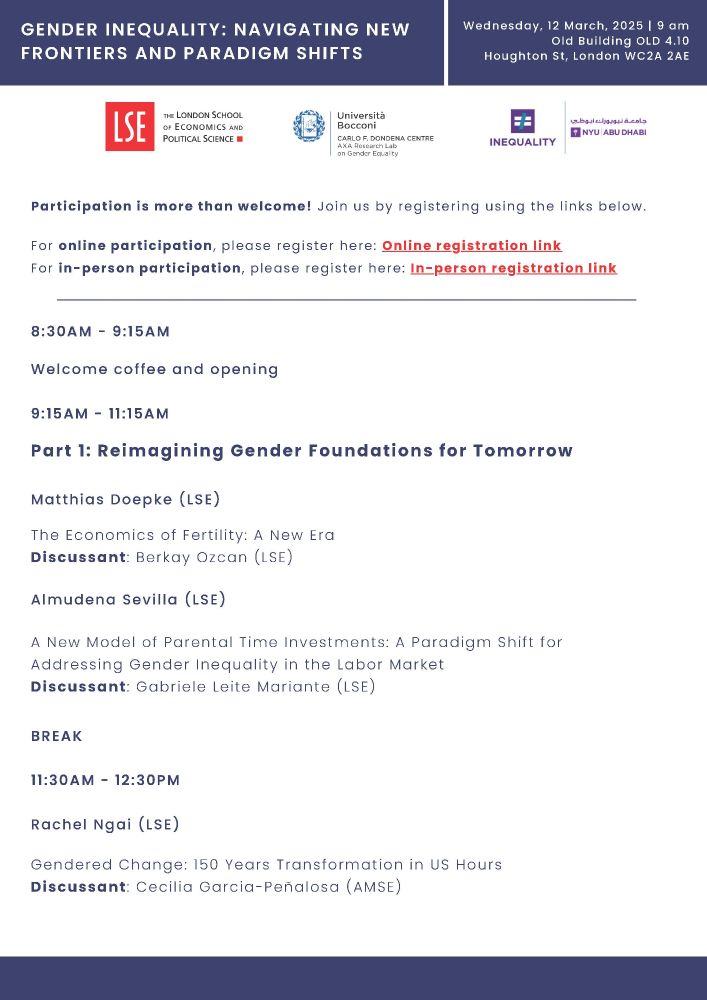
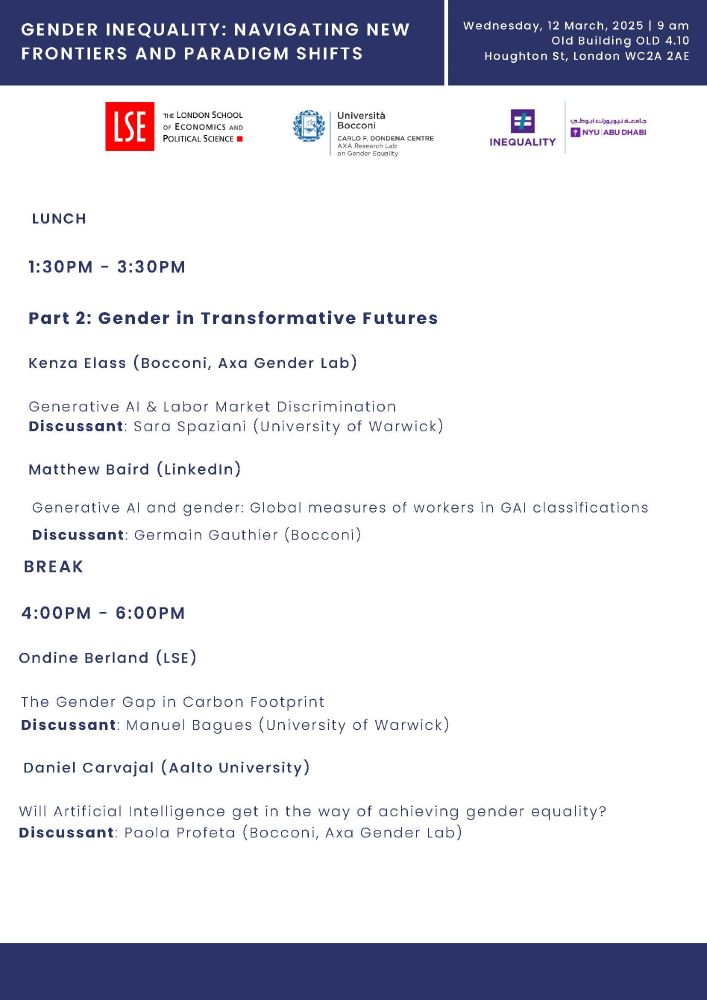



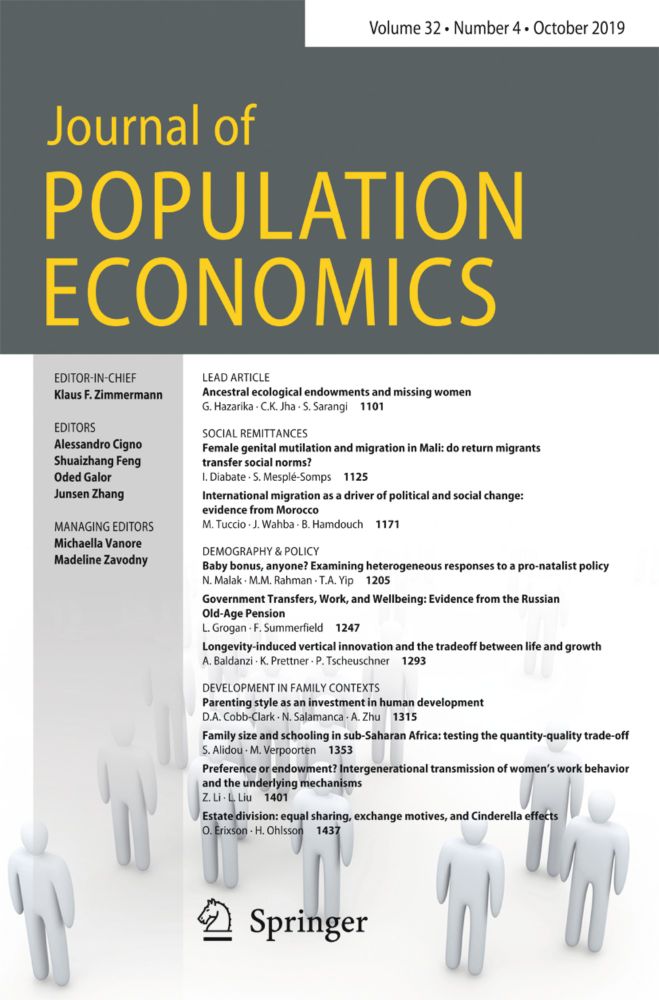

by Johanna Rickne — Reposted by: Michael Barnett, Paul Cairney, Ruth Dassonneville , and 15 more Michael Barnett, Paul Cairney, Ruth Dassonneville, Matthias Doepke, Jörg Peters, Scott Gehlbach, Andreas Bergh, Andreas Kotsadam, Wim Van Lancker, Erwin Dekker, Janne Tukiainen, Dominik Vogel, Tore Ellingsen, Jan Marcus, Niklas Jakobsson, Simon Wiederhold, Peter Fallesen, Ben Greiner
Please help share with colleagues or students who might find this resource useful! 🌷🌷🌷
We follow the official method of the Swedish government to code party families. The database includes the raw data from the statistical reports so that users can study more fine-grained local variation. 6/

Reposted by: Johanna Rickne

Because prevention strategies need to be targeted to the source. Sexual harassment from colleagues and managers requires different prevention strategies than sexual harassment from outside groups.
8/
Male-dominated jobs with high outsider contact are rare and differ from the overall pattern. Women in these male-stereotyped roles, like security guards or police, face high risks of sexual harassment from both insiders and outsiders (the latter shown in the figure).
7/
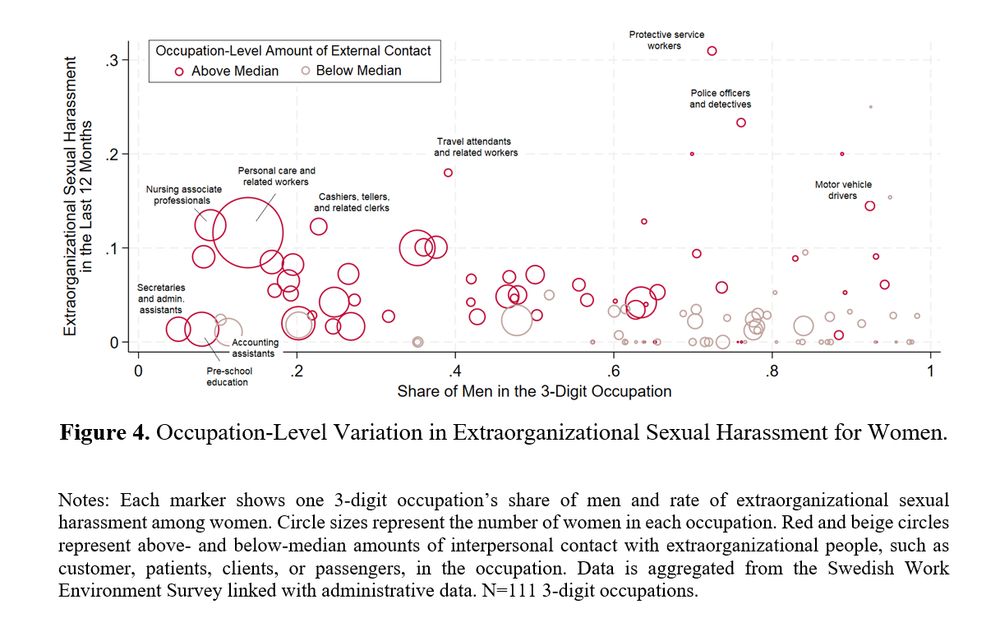
Men in female-dominated, high-contact roles face a double exposure—more harassment from colleagues and from outsiders.
This group is often overlooked in both public discussion and policy responses.
6/
These jobs are mostly held by women.
The level of contact with outsiders is predictive of risk.
5/

4/

• Workers face more harassment from colleagues when they are gender minorities in their occupation
• Workers face more harassment from outsiders in women-dominated, high-contact jobs
The common denominator? Interpersonal contact.
3/
• From colleagues or managers (intraorganizational)
• From clients, patients, customers, etc. (extraorganizational)
2/
Our new study finds two distinct patterns depending on whether harassment comes from inside or outside the workplace.
CEPR WP: cepr.org/publications...
Ungated: drive.google.com/file/d/1jPOV...
🧵 1/
